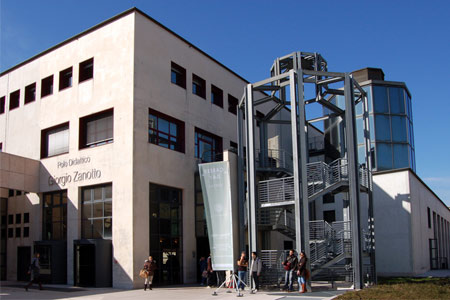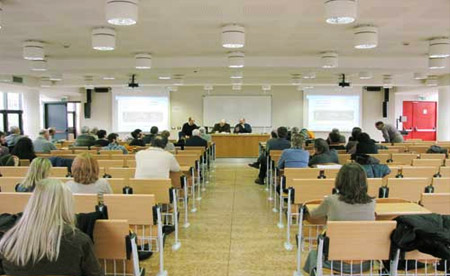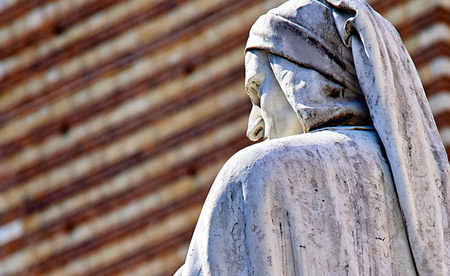Course not running

- Course code
- 4S003878
-
Name of lecturer
-
Fabio Coden
- Coordinator
-
Fabio Coden
- Number of ECTS credits allocated
-
6
-
Other available courses
-
- Academic sector
-
L-ART/01 - HISTORY OF MEDIEVAL ART
- Language of instruction
- Italian
- Location
- VERONA
- Period
-
CuCi IIB dal Apr 14, 2021 al May 29, 2021.
Lesson timetable
Go to lesson schedule
Learning outcomes
The course of Medieval Art History II (m) aims to improve the student: to perfect the knowledge of medieval art history; to acquire full knowledge of the methodological tools of historical-artistic research; to develop the ability of critical analysis, in view of an autonomous research activity. At the end of the course the student should be able to: identify, read, understand and evaluate autonomously the characters of European artistic idioms and, at the same time, to grasp the stimuli coming from different places; understand with a firm method and detailed knowledge some specific artistic experiences (especially architecture and sculpture); to investigate with ability the characteristics of some works of art or artistic movements between the 4th and 13th century; recognize the more specific cultural characteristics of the medieval artefact; understand the interactions between homogeneous areas.
Syllabus
In the course of Medieval Art II (m) the art of the high Middle Ages will be examined, in particular architecture and its decorative apparatus, in a chronological period between the second half of the 8th and the 9th century: this was the crucial period in which a political, religious and cultural transition of European extension took place. In this fortunate transition, cultural phenomena such as the revival of antiquity matured and were amplified, and new spatial solutions were experimented.
The main monuments of the late Lombard period and their relationship with those of the following period will be examined, together with those of the extraordinary season of the so-called Carolingian renewal, both in Italy and in Europe.
Reference books
| Author |
Title |
Publisher |
Year |
ISBN |
Note |
| GP. BROGIOLO |
Desiderio e Ansa a Brescia: dalla fondazione del monastero al mito, in Il futuro dei Longobardi. L’Italia e la costruzione dell’Europa di Carlo Magno, Saggi, a cura di C. Bertelli e G.P. Brogiolo,
|
|
2000
|
|
|
| H. TORP |
Il tempietto longobardo. La cappella palatina di Cividale
|
|
2006
|
|
|
| R. KRAUTHEIMER |
Introduzione a un’iconografia dell’architettura sacra medievale, in Architettura sacra paleocristiana e medievale e altri saggi su Rinascimento e Barocco
|
|
1993
|
|
|
| G. CIOTTA |
La cultura architettonica carolingia. Da Pipino III a Carlo il Grosso (751-888)
|
Franco Angeli |
2010
|
|
|
| M. D’ONOFRIO |
Roma e Aquisgrana
|
|
1983
|
|
|
| R. KRAUTHEIMER |
Roma. Profilo di una città 312-1308
|
|
1981
|
|
|
Assessment methods and criteria
The exam will be oral, without distinction between attending and non-attending students.
The exam will focus on the topics discussed in the classroom and on the notions acquired through a specific bibliography.
The evaluation will be expressed in thirtieths.







